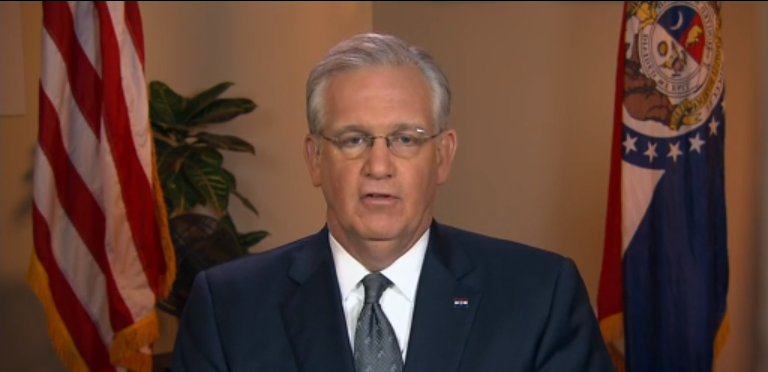
COLUMBIA, Mo. – Gov. Jay Nixon again on Wednesday defended his handling of the state’s response to the violent unrest in Ferguson after the police shooting of Michael Brown, an 18-year-old unarmed black man.
On Wednesday – three weeks after one of the most violent nights of protests there that instigated the state control of the response – the second-term Democrat lifted his executive order declaring a State of Emergency in response to the crisis in Ferguson, ceding control back to local authorities.
The second-term Democrat has faced criticism from local leaders and national pundits, alike, for his response to the August 9 shooting.
Much of the initial criticism was directed at the state’s initial response, which several – including local Black legislators – criticized as slow and reactionary.
Speaking with reporters in Columbia, Nixon defended his decision to hold off on having the state take control of the situation. Early on, he explained, there was no immediate reason to expect violent outbursts in North St. Louis County.
“Every time there’s a shooting, the state doesn’t come in,” he said.
Ferguson, however, was not an average shooting.
On August 9, Brown was shot and killed by a police officer. An image of his body lying in the street sparked almost immediate outrage. The next night, a candlelight vigil turned violent when some protestors began to loot local businesses. The next day, Monday, August 11, St. Louis County Police deployed tear gas on protestors. More protests occurred on Tuesday, and on Wednesday, police again deployed tear gas on protestors and two journalists were arrested.
While the heat in Ferguson was rising that day, Nixon was visiting students at the Missouri State Fair and touring a new high school that was built in Joplin following the devastating 2011 tornado. Up until the Wednesday night violence, Nixon was maintaining his normal schedule.
The Wednesday night, he said, the situation became “threatening and violent” to the point that it “got my attention.”
“I crashed my schedule and got over there. The way my days were operating was I was spending a great deal of time late at night either on the phone or in conferences about what was going on. When there was an increasing threat, I acted,” he said.
The next day, August 14, he initiated the Highway Patrol’s control over the security operation, led by Capt. Ron Johnson.
When pressed on why he didn’t order the Missouri Highway Patrol to get involved sooner, Nixon said: “It is a significant order for a governor, any governor, to say that we are going to come in and that a state agency is going to be in charge of safety and security for a region.”
Nixon said he began having discussions “with folks on the ground” starting “as early as Monday morning.” That’s when he called on the U.S. Department of Justice to launch its own inquiry. The next day, he was in St. Louis visiting with local religious and community leaders.
“We were watching this one as it developed,” he said.
